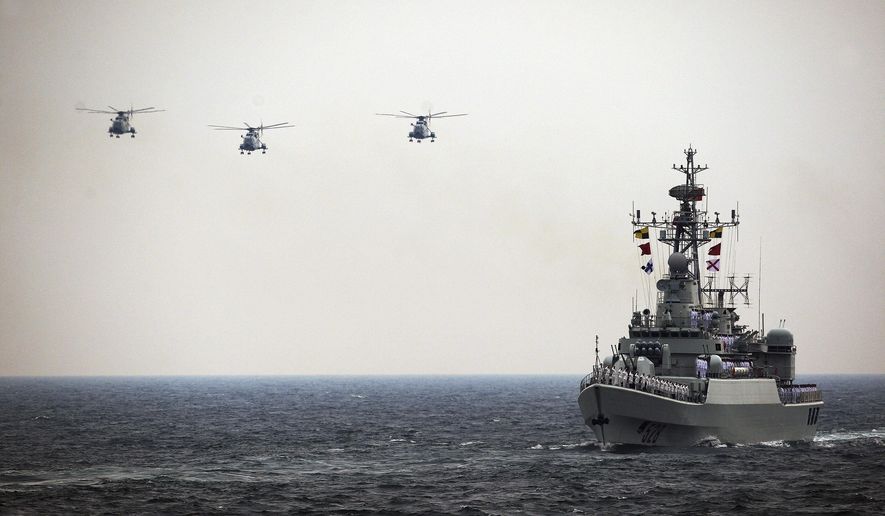Away from the Chinese military’s expanding capabilities in cyberspace and electronic warfare, Beijing is growing the size and reach of its naval fleet, advancing its air force and testing a host of new missiles, the Pentagon said Thursday.
An annual report to Congress on China’s evolving military capability concluded that the modernization was being driven in part by growing territorial disputes in the East and South China seas, as well as by Beijing’s desire to expand its presence and influence abroad.
But the main motivation remains Beijing’s concern over the possibility of hostilities in the Taiwan Strait, according to the report, which downplayed the notion that a recent thaw in relations between China and Taiwan has done anything to seriously mitigate the threat of a military conflict between the two countries.
“Despite positive public statements about cross-Strait dynamics from top leaders in China following the re-election of Taiwan President Ma Ying-jeou in 2012, there have been no signs that China’s military disposition opposite Taiwan has changed significantly,” the Pentagon report said. “The [People’s Liberation Army] has continued to develop and deploy military capabilities to coerce Taiwan or to attempt an invasion, if necessary.”
The report’s release Thursday coincided with a visit to The Washington Times by Taiwanese diplomats, who said they want to renew their request to obtain some of the Pentagon’s coveted F-35 Joint Strike Fighters or, perhaps, its F-22 Raptor fighter jets.
The island country recognizes that it has an increasingly important role to play in the Obama administration’s pivot to the Asia-Pacific region. And since Taiwan is an important ally of the United States, “it is important for the U.S. to think of a way to show its substantial support for Taiwan,” said Kwei-Bo Huang, Taiwan’s secretary general of the association of foreign relations.
PHOTOS: Top World War II movies
A Defense Department official told reporters Thursday that the Pentagon remains vigilant about tracking the Chinese military progress toward modernizing its weapons and acquiring new ones. “We continue to monitor and document the Chinese military’s capabilities, particularly in the region of Taiwan,” the official said.
In a long-standing U.S. criticism of China’s military expansion over the past two decades, the Pentagon criticized China’s lack of openness about its strategy, which it said has caused concerns in Asia.
“Absent greater transparency from China and a change in its behavior, these concerns will likely intensify as the PLA’s military modernization program progresses,” the report said.
China’s government in March announced a 12.2 percent increase in military spending to $132 billion. That followed last year’s 10.7 percent increase to $114 billion, giving China the second-highest defense budget for any nation behind the U.S., which spent $600.4 billion on its military last year.
• This article is based in part on wire service reports
• Maggie Ybarra can be reached at mybarra@washingtontimes.com.




Please read our comment policy before commenting.